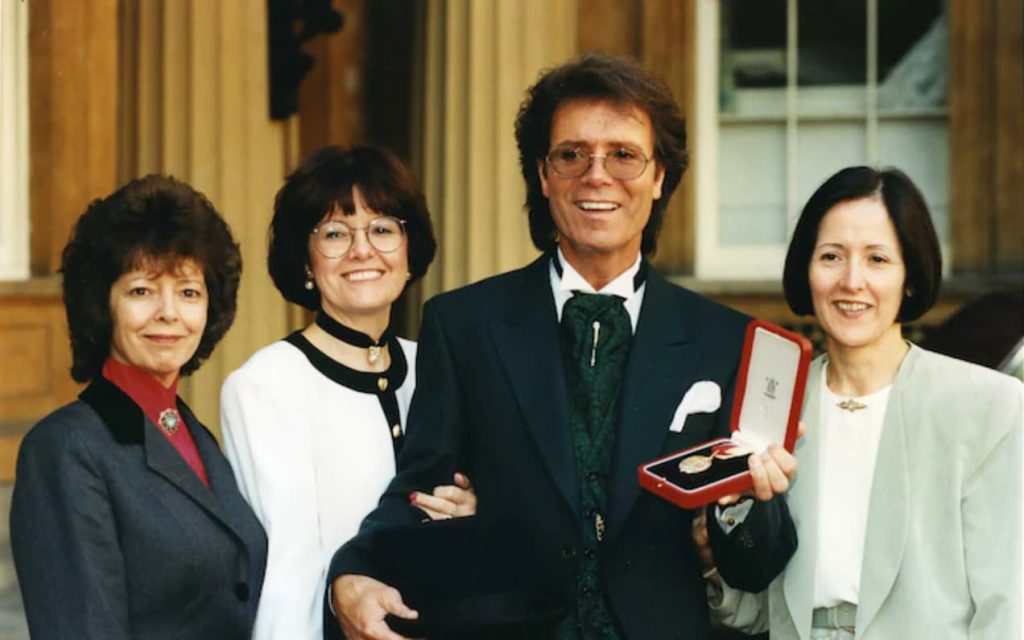
The Raw Energy of Youth Unleashed: Cliff Richard and the seismic arrival of “Move It.”
This is the sound that shook the British music scene, a raw and untamed energy declaring that rock and roll had truly landed on our shores. “Move It,” a primal call to rhythm and youthful rebellion, wasn’t just a song; it was a cultural tremor. Released on August 29, 1958, with Cliff Richard and his then backing group, The Drifters (soon to be known as The Shadows), this electrifying track swiftly climbed the UK Singles Chart, peaking at Number 2 and spending an impressive 17 weeks in the Top 100. Originally intended as the B-side to “Schoolboy Crush,” fate, and perhaps the sheer undeniable force of its beat, intervened, flipping it to the A-side and launching Cliff Richard into the stratosphere of British pop stardom.
The story behind “Move It” is as vibrant as the music itself. Penned by Ian Samwell, a guitarist in The Drifters, the song reportedly came to him on the top of a London bus, a testament to the way inspiration can strike in the most ordinary of moments. Samwell, a keen admirer of American rock and roll pioneers like Chuck Berry, captured that raw, driving spirit in “Move It,” yet infused it with a distinctly British edge. There’s a youthful urgency in the lyrics, a simple yet potent invitation to lose oneself in the music. It wasn’t about profound poetic meaning; it was about feeling the rhythm and letting it take control. As Cliff Richard himself has often reflected, the song was about pure energy and the irresistible urge to move.
The recording session for “Move It” at EMI’s Abbey Road Studios was a pivotal moment. While The Drifters included Ian Samwell on rhythm guitar and Terry Smart on drums, producer Norrie Paramor, aiming for a fuller sound, brought in session musicians Ernie Shear on lead guitar and Frank Clarke on bass. It’s a fascinating detail, highlighting the blend of raw band energy and studio polish that contributed to the song’s impact. Ernie Shear’s distinctive guitar work, particularly the opening riff, became instantly recognizable and integral to the song’s identity.
The significance of “Move It” cannot be overstated. At a time when British popular music was still finding its own post-war identity, heavily influenced by American sounds but not yet fully formed, this song felt like a genuine homegrown eruption of rock and roll. It was grittier, more visceral than much of what had come before, and it resonated deeply with a generation of teenagers eager to embrace this new, exciting sound. Cliff Richard, with his youthful looks and energetic stage presence, became the figurehead of this movement, often dubbed “Britain’s Elvis.”
The success of “Move It” paved the way for an extraordinary career for Cliff Richard and also marked the beginning of the instrumental prowess of The Shadows. Although Ian Samwell would later step away from the band to focus on songwriting and production (famously co-writing “A Horse with No Name” for the band America), the foundation laid with “Move It” was crucial. The song’s impact was immediate and far-reaching, inspiring countless young musicians across the UK to pick up guitars and form their own bands. It signaled a shift in the landscape of British music, moving away from more traditional forms towards the vibrant and rebellious spirit of rock and roll.
Thinking back to that time, one can almost feel the excitement in the air, the sense of something new and vital breaking through. “Move It” wasn’t just a hit record; it was an anthem for a generation on the cusp of change, a raw and electrifying statement that British rock and roll had arrived and was here to stay. It remains a timeless classic, a reminder of the youthful energy and groundbreaking spirit that defined the early days of British rock. Even now, when those opening chords ring out, it’s hard not to feel that same irresistible urge: to get up and move it.